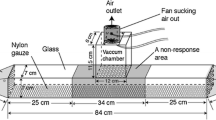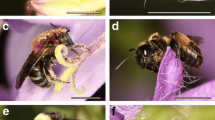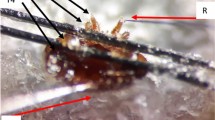Summary.
Male orchid bees (Euglossini) are attracted to floral and non-floral odours, which they collect and accumulate in hind tibial cavities for subsequent exposure during courtship. Fragrance preferences are species-specific, leading to relatively specialised pollination of euglossophilous plants. We tested the hypothesis that preferences for attractive compounds have led to species-specific sensory adaptations that are measurable by electroantennography (EAG). All of 16 synthetic fragrance compounds elicited significant responses on male bee antennae, with some difference of response spectra between individuals of Euglossa spp. and bumblebee (Bombus terrestris) controls, but no difference between three different species of Euglossa. There was no correspondence between a compounds’ attractiveness in baiting assays and the size of its electrophysiological response. Our results strengthen the view that fragrance preferences are largely mediated by processes in higher nervous centres. Peripheral sensory tuning to single attractive odorants may be constrained by the need to detect and discriminate between many fragrances, including many that have repellent effects on male bees.
Similar content being viewed by others
Author information
Authors and Affiliations
Corresponding author
Rights and permissions
About this article
Cite this article
Eltz, T., Lunau, K. Antennal response to fragrance compounds in male orchid bees. Chemoecology 15, 135–138 (2005). https://doi.org/10.1007/s00049-005-0303-y
Received:
Accepted:
Published:
Issue Date:
DOI: https://doi.org/10.1007/s00049-005-0303-y




